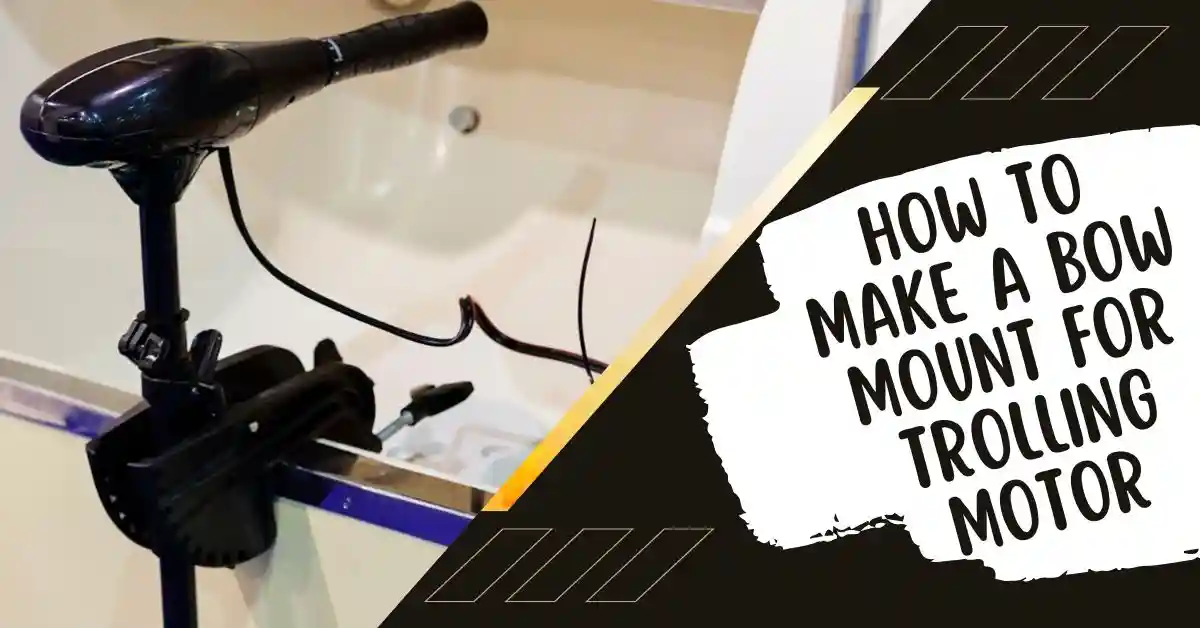A bow mount is a type of mount that is used to attach a trolling motor to the front, or bow, of a boat. The trolling motor is typically mounted on a bracket that is secured to the bow of the boat and is used to provide propulsion and steer the boat while fishing or maneuvering in shallow waters.
Bow mounts are particularly useful for anglers who prefer to fish while standing at the bow of the boat. By mounting the trolling motor at the bow, the angler can easily control the boat’s direction and speed while casting or trolling.
Bow mounts are often equipped with features such as wireless remote controls, GPS navigation systems, and sonar capabilities, making them a versatile and convenient option for fishing boats.
The bow moves much more quickly as a result, which improves the angler’s fishing experience.
So, how to make a bow mount for a trolling motor?
Separate the trolling motor from the mount base. Select a palace on the deck. Drill the deck. Drill the holes to mount bolts. Thread a bolt in each hole. Slip rubber washer. Put the base over the holes that were drilled. Check the deck surface. Thread a steel washer. Secure the motor assembly.
We’ve discussed the entire steps of how to mount a bow trolling motor.
Table of Contents
ToggleThe Items We’re Going to Need
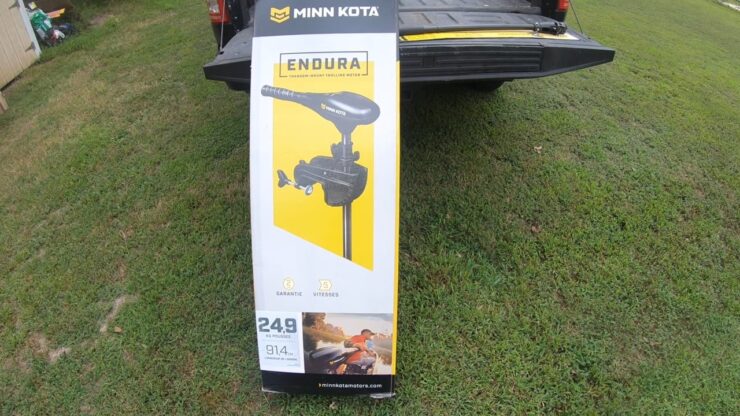
To mount a bow for trolling motor we’re going to need these tools.
- Phillip screwdrivers
- 7/16” Wrench kit
- Drill
- Bolts or screws
- Retaining nuts
- Metal washers
- Rubber washers
- 9/32” Drill bits
- A second person (if necessary)
For drilling, you can use 9/32” drill bits. Long-lasting in situations involving high temperatures (up to 1,100 degrees)
| Product | Feature |
| 9/32” Drill Bits |
|
These 9/32” drill bits are used most effectively for drilling through light-gauge metal. Additionally available in titanium, high-carbon steel, cast iron, alloy steel, aluminum, and steel.
How to Perform Bow Mounting Steps for a Trolling Motor?
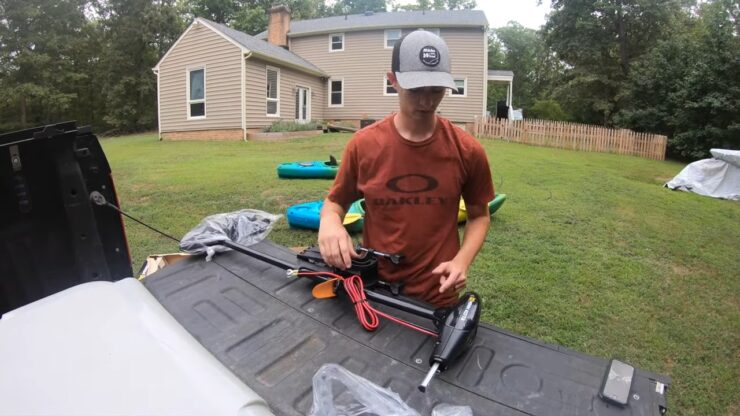
These steps can be used to mount a bow for a trolling motor.
Step 1: Disconnect The Mount Base And Motor Assembly
Disconnect the mount base and trolling motor assembly. Boats with raised, flat-forward decks are intended to be utilized with bow-mounted electric trolling motors.
Bass boats are made for fishing for largemouth bass in shallow water near weeds and stumps. These sorts of decks are most frequently found in areas where precise boat control is necessary.
Step 2: Select The Location
Determine where on the deck the base will be fastened. When it is propelling the boat through the water and when it is stored on deck. The mount base should be positioned to support the motor both.
The base should also be positioned so that, if the motor utilizes a breakaway mount. There is sufficient room for the motor to separate from the base. The mounting screws can pass through the deck but not the hull, which explains why.
Step 3: Mark The Locations
Mark the locations of the deck’s drilling holes. For this, make a template out of the mount base.
Step 4: Clean Out The Dust
Make the mounting bolt holes with a drill. Drill to a depth of 1/4 inch (6.5 mm) using a sharp bit. Then clean out any leftover debris. You’ll need to countersink the holes if the boat is composed of fiberglass.
Step 5: Thread The Holes
Should thread each hole on the mount base with a bolt.
Step 6: Attach Rubber Washer
Under the mount base, attach a rubber washer to each bolt. As you slide the mount base over the holes you drilled in the deck. You’ll need to keep the washers in place with your fingers.
Put washers over the drilled holes if this is too challenging.
Step 7: Place The Base Over The Holes
Place the base over the drilled holes once the bolts have been threaded through each one.
Step 8: Level The Foundation
Verify that the base is level against the deck by looking at it. If not, you will need to level the foundation by placing more rubber washers under the bolts. Place it where the base wobbles.
To elevate the motor onto the deck and secure it down for transport.
Do not bind the base must rest evenly. If it is uneven, there might be a chance to break or damage or deck. Then you have to replace the boat deck or floor.
Step 9: Tightening The Nuts
Each bolt is finished off with a steel washer and retaining nut. To keep the base in place, tighten the nuts.
Step 10: Attach The Motor
Attach the motor unit firmly to the ground. For rough water, bow-mounted trolling motors should be operated at least 5 inches (12.5 cm) below the surface. While standing up and using the motor. It is advised to fish at a depth of 12 inches (30 cm).
Precautions
While bow mounting for the trolling motor you need to keep these things in mind.
- Make sure that the motor is not connected to a power source. And it is not installed on a level surface.
- Avoid touching any hinges or pivots with your fingers. As well as all moving parts, when raising or lowering the motor.
It is better to work with safety to avoid any damage.
What Size Bow Mount Trolling Motor Do You Need?
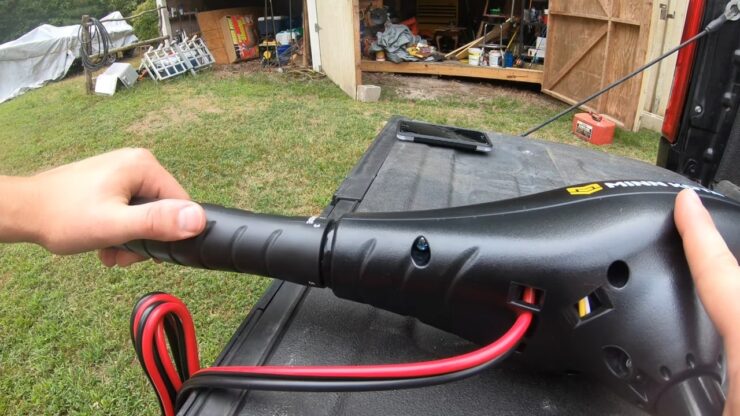
When talking about trolling motor size, the shaft length and thrust are the main topics.
But what is a size bow mount trolling motor? The shaft length is influenced by how high your boat is above the waterline.
A shaft that is long enough to support the lower unit would be great. A foot or below the water’s surface, but not so deep as to make fishing difficult.
Size Chart for Bow Mount Trolling Motors
| Bow’s peak to the water’s surface | Shaft Lenght |
| 0″ – 16″ | 36″ |
| 16″ – 22″ | 42″ |
| 22″ – 28″ | 48″ – 52″ |
| 28″ – 34″ | 52″ – 62″ |
| 34″ + | 70″ |
An aluminum sailboat is wonderful if sailors want to travel for a long time while maintaining it. Antioxidants on the boat, particularly those in the transoms, could deteriorate over time.
Therefore, it is crucial to look for reliable transom reinforcement for aluminum boats.
This raises the question, “How can an aluminum boat’s transom be strengthened?” There are numerous ways to strengthen the transom on an aluminum boat’s stern or bow.
You can use inexpensive materials like plyboard, PVC, etc. It supports the plate transoms and the aluminum boat hull is the best option.
FAQs
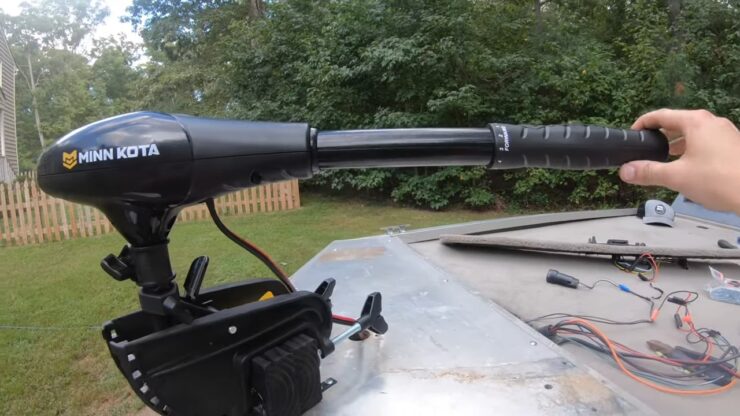
How Long Of a Bow Mount Trolling Motor Do I Need?
Add 20 inches to the distance measured from the transom or bow’s mounting surface to the water’s surface. It is “to achieve the suggested bare minimum shaft length. Add five more if you’ll be fishing in choppy water “according to the measurement.
Does a Bow Mount Trolling Motor Have to Be Centered?
While it is not strictly necessary to center a bow mount trolling motor, it is generally recommended to position the motor as close to the centerline of the boat as possible. This helps to improve the balance and stability of the boat, especially when traveling at higher speeds or in rough water conditions.
A properly centered trolling motor can also help to reduce steering torque and improve the overall performance of the boat, making it easier to maneuver and control. However, in some cases, the positioning of the trolling motor may be dictated by the design of the boat or the location of other equipment, and it may not be possible to center the motor.
In these situations, it is important to ensure that the motor is securely mounted and balanced to minimize any negative impact on the boat’s handling or performance.
How Far Should a Bow Mount Trolling Motor Be in The Water?
The depth at which a bow mount trolling motor should be submerged in the water can vary depending on a number of factors, including the size and type of boat, the motor’s thrust power, and the water conditions. In general, however, it is recommended to submerge the trolling motor at least 12 inches into the water, with the top of the motor head sitting just above the waterline.
This helps to ensure that the propeller is fully submerged and able to generate sufficient thrust to move the boat efficiently, while also reducing the risk of motor cavitation or ventilating in choppy water.
It is important to refer to the manufacturer’s recommendations and adjust the depth of the motor as needed for optimal performance.
Why Are Trolling Motors on The Bow?
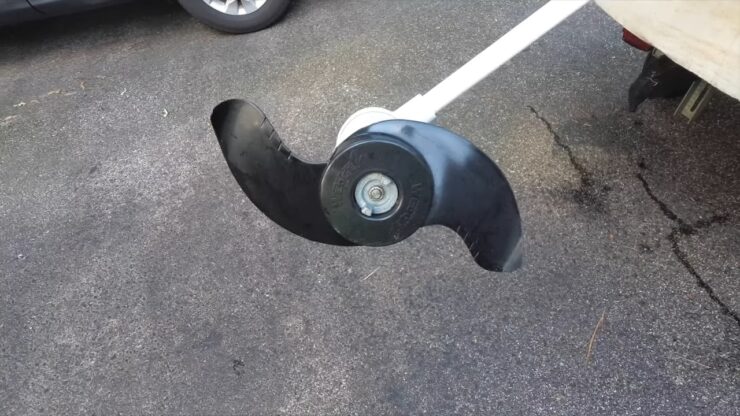
Trolling motors are often mounted on the bow of a boat for several reasons. First and foremost, mounting a trolling motor on the bow allows for greater control and maneuverability while fishing. By positioning the motor at the front of the boat, anglers can more easily position themselves in relation to the fish they are trying to catch, making it easier to maintain the correct angle and distance for casting.
A bow-mounted trolling motor can be used to “anchor” the boat in place without the need for a traditional anchor, allowing for more precise positioning and reducing the risk of spooking nearby fish. Finally, mounting the trolling motor on the bow can help to improve the balance and stability of the boat, especially when fishing in windy or choppy conditions.
Is It Ok to Leave Trolling Motor in The Rain?
Leaving a trolling motor in the rain is generally not recommended as it can damage the motor and its components. Water can enter the motor’s electrical parts and cause corrosion, leading to malfunctions or even complete failure. It’s best to remove the motor and cover it with a waterproof cover or store it in a dry place when not in use.
If the motor has been exposed to rain or water, it should be thoroughly dried and inspected before use to prevent any potential damage or safety issues.
Conclusion
That’s how to make a bow mount for trolling motor. Follow the above instructions to make a bow mount for trolling motor.
Use clamps to hold the trolling motor in position. Use it while tightening the screws when putting them on bows. If not, you run the risk of having a motor that is loose and insufficiently fastened.
That’s all for today. Have a good day!
I’m Liam Jackson, the proud owner and driving force behind KayakPaddling.net. Born somewhere in the expansive beauty of the United States, I’ve nurtured a lifelong passion for kayaking and fishing that has led me to explore the far corners of our nation’s waterways.
Related Posts:
- 10 Best Saltwater Fishing Boats - Ultimate Angling Adventure
- Heavy Duty Fishing: 11 Best Rods And Reels For Big Fish 2024
- 12 Best Kicker Motor Bracket: 2024 - Make the Right Choice
- 12 Best Bass Boats Under $20,000 2024 - Catch Your Prize
- 12 Best Motorized Kayak 2024 - Start Your Aquatic Adventure!
- 16 Best Kayak For Beginners 2024 - Kayaking Adventure Gear

